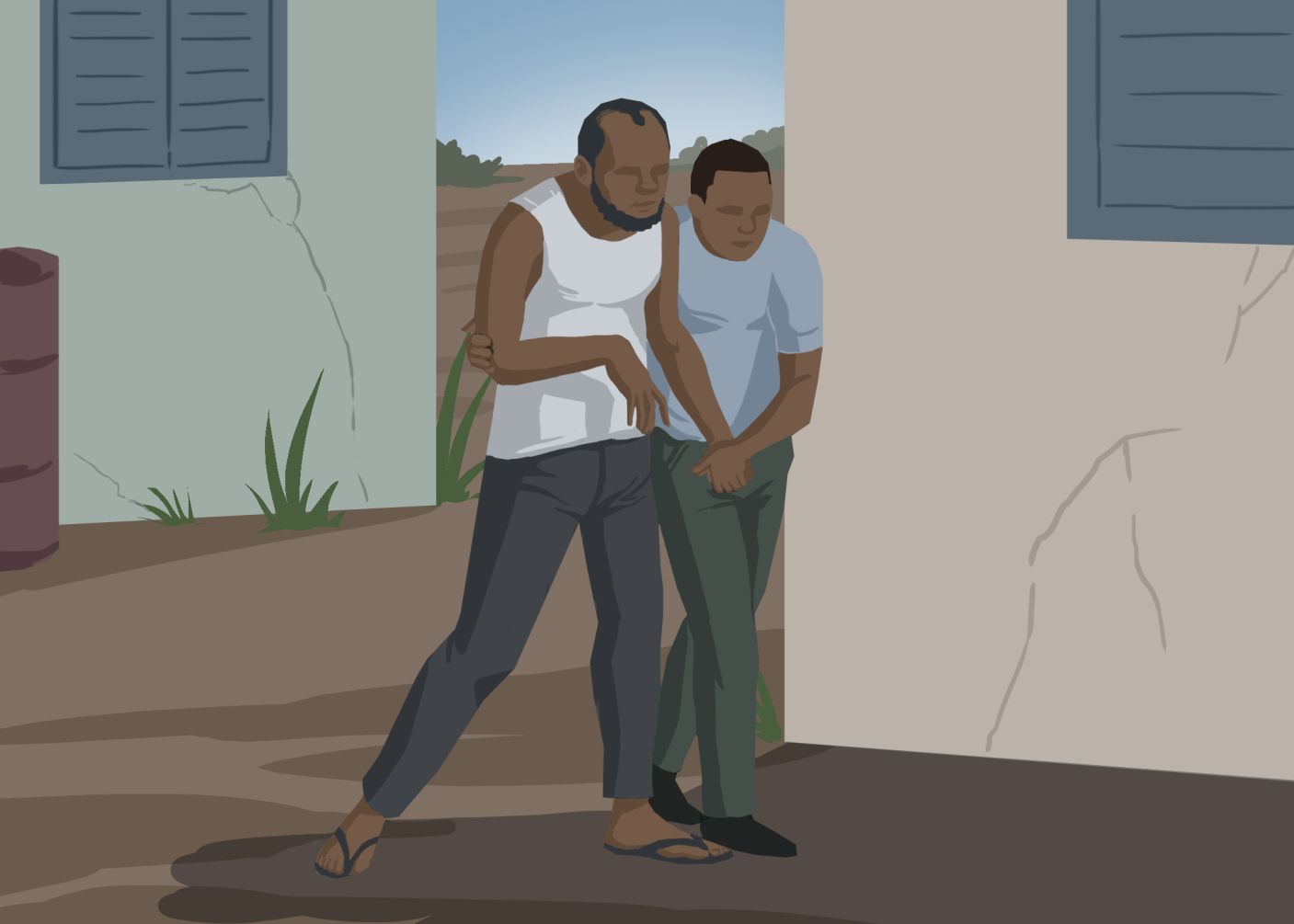3. How to use the resource
to the A general screening process helps in identifying rehabilitation needs and deciding which rehabilitation pathway to follow to provide interventions for rehabilitation.
The WHO rehabilitation screening tool is a brief tool for functioning difficulties administered by trained health workers. It asks about the presence of difficulties in eight (8) rehabilitation pathways.
WHO Rehabilitation Screening Tool

How to use the WHO Rehabilitation Screening Tool
The tool includes the following questions and the rehabilitation pathway to choose if the answer is ‘YES’.
1. Ask the person:
Do you have difficulty remembering or concentrating?
Do you feel sad, low, worried or anxious because of your health?
Do you have difficulty sleeping?
If the answer is ‘YES’ to any of the above questions, proceed to the Mental Functions rehabilitation pathway
2. Ask the person:
Do you have difficulty seeing things?
If the answer is ‘YES’ to the above question, proceed to the Vision rehabilitation pathway
3. Ask the person:
Do you have difficulty with hearing, speech or communication with others?
If the answer is ‘YES’ to the above question, proceed to the Hearing, Speech and Communication rehabilitation pathway
4. Ask the person:
Have you unintentionally lost more than 3 kg of weight over the last three months?
Do you have loss of appetite?
Do have difficulty with intake of food or water?
If the answer is ‘YES’ to any of the above questions, proceed to the Nutrition and Dysphagia rehabilitation pathway
5. Ask the person:
Do you easily get tired, breathless or do you have swelling or puffiness in parts of your body?
If the answer is ‘YES’ to any of the above questions, proceed to the Respiratory, Cardiovascular and Haematological rehabilitation pathway
6. Ask the person:
Do you have difficulty with movement or using parts of your body?
If the answer is ‘YES’ to the above question, proceed to the Motor functions and mobility rehabilitation pathway
7. Ask the person:
Do you have bodily aches or pain?
If the answer is ‘YES’ to the above question, proceed to the Pain rehabilitation pathway
8. Ask the person:
Do you have difficulty with your bowel and bladder, doing daily activities or joining community activities, such as festivities, religious or other activities?
If the answer is ‘YES’ to any of the above questions, proceed to the Activities of Daily living, Bowel and Bladder, Community and Social life (Self-care) rehabilitation pathway
Note
Each question in the tool should be asked as it is common that there are multiple pathways that the client experiences difficulty with and all should be identified.
When multiple rehabilitation pathways are identified it may be possible to step through these addressing all the rehabilitation needs, however if time prevents this then it may be necessary to prioritize the first pathway and book for a return visit.![]() Question
Question

Meet Kofi
Kofi is a 48-year-old farmer. He presents to the local clinic with new complaints. He is asked all the questions in the screening tool and Kofi answers ‘YES’ to the questions below:
- Do you have difficulty with movement or using parts of your body?
- Do you have difficulty with your bowel and bladder, doing daily activities or joining community activities, such as festivities, religious or other activities?
Which of the following rehabilitation pathways should the doctor follow in order to provide care for Kofi?
- a. Activities of Daily living, Bowel and Bladder, Community and Social life (Self-care) rehabilitation pathway
- b. Motor functions and mobility rehabilitation pathway
- c. Both of the above
- d. None
If you selected c, you are correct.
A ‘YES’ answer to the question: ‘Do you have difficulty with movement or using parts of your body?’ signposts to the Motor functions and mobility pathway
A ‘YES’ answer to the question: ‘Do you have difficulty with your bowel and bladder, doing daily activities or joining community activities, such as festivities, religious or other activities?’ signposts to the Activities of Daily living, Bowel and Bladder, Community and Social life (Self-care) rehabilitation pathway
The BRP-CR’s eight (8) rehabilitation pathways are linked to care modules. Each of which is organized into a module outlining the provision of interventions for rehabilitation care.
Overview to the WHO Rehabilitation Screening, Rehabilitation Pathways and Care Modules

Clinical Decision Tree
There is a clinical decision tree that guides the health worker in the selection of rehabilitation interventions. It shows the four steps involved in providing rehabilitation interventions as shown below. There are instructions on what to do based on answers to questions asked in the assessment part of the clinical decision tree. These lead to a planning phase which informs the delivery of care and monitoring of the interventions provided. The steps are further explained in lesson four (4).

You have completed Lesson three!
If you have any questions or comments, post them on the discussion forum.
